Food Art takes culinary creations to a new level by transforming ordinary dishes into stunning works of art. Discover the techniques, benefits, and inspirations behind this delightful trend here at FOODS.EDU.VN. Embark on a flavorful journey and discover how artistic food presentation and edible art can inspire even the pickiest eaters. Get ready to explore this culinary creativity and plating techniques that elevate the dining experience, making every meal a feast for the eyes and the palate.
1. Understanding the Essence of Food Art
Food art, at its core, is the practice of transforming edible items into visually appealing creations. It goes beyond simple plating, aiming to evoke emotion, tell a story, or simply bring joy through the aesthetic presentation of food. This culinary art form combines culinary skills with artistic techniques, using ingredients as a medium for expression. Think of it as painting, but with flavors and textures as your palette.
1.1. Defining Food Art: More Than Just Plating
While plating focuses on arranging food on a plate in an appealing manner, food art elevates this concept to create sculptures, landscapes, portraits, and abstract designs using edible materials. It requires a deep understanding of ingredients, colors, textures, and composition, as well as the ability to manipulate food into desired shapes and forms.
1.2. A Brief History of Edible Art
The history of food art dates back centuries. From the elaborate sugar sculptures of medieval banquets to the meticulously arranged fruit platters of the Renaissance, culinary artists have always sought to enhance the dining experience through visual appeal. In ancient Egypt, intricate bread designs were created for religious ceremonies. During the Victorian era, elaborate aspics and jellies were popular, showcasing culinary artistry. Today, food art has evolved with modern techniques and global influences, pushing the boundaries of what’s possible with food.
1.3. The Rise of Food Art in Modern Culture
With the advent of social media, food art has experienced a renaissance. Platforms like Instagram and Pinterest have become virtual galleries for food artists to showcase their creations, inspiring millions to experiment with culinary aesthetics. Celebrity chefs and cooking shows have also contributed to the popularization of food art, highlighting the importance of presentation in the overall dining experience. This increased visibility has led to a greater appreciation for the skill and creativity involved in transforming food into art.
2. Key Elements of Food Art
Creating food art involves a combination of technical skills and artistic vision. Understanding the fundamental elements that contribute to a successful food art piece is crucial for anyone looking to explore this culinary domain.
2.1. Color Theory in Culinary Creations
Color plays a significant role in how we perceive food. Vibrant and contrasting colors can make a dish more appealing, while dull or monotonous colors can have the opposite effect. Food artists use color theory to create visually stunning dishes, utilizing natural hues from fruits, vegetables, sauces, and spices.
Color Combinations and Their Effects
| Color Combination | Effect | Examples |
|---|---|---|
| Complementary | Creates visual contrast and excitement | Red tomatoes with green basil, yellow corn with purple cabbage |
| Analogous | Provides harmony and a sense of calm | Orange carrots, yellow bell peppers, and red bell peppers in a stir-fry |
| Monochromatic | Offers simplicity and elegance | Various shades of green in a salad with different types of lettuce and herbs |
| Triadic | Balances vibrancy and harmony | Red strawberries, blue blueberries, and yellow bananas in a fruit salad |
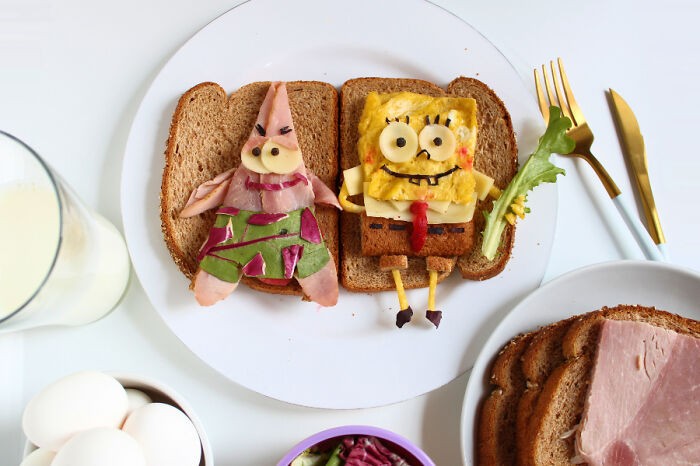

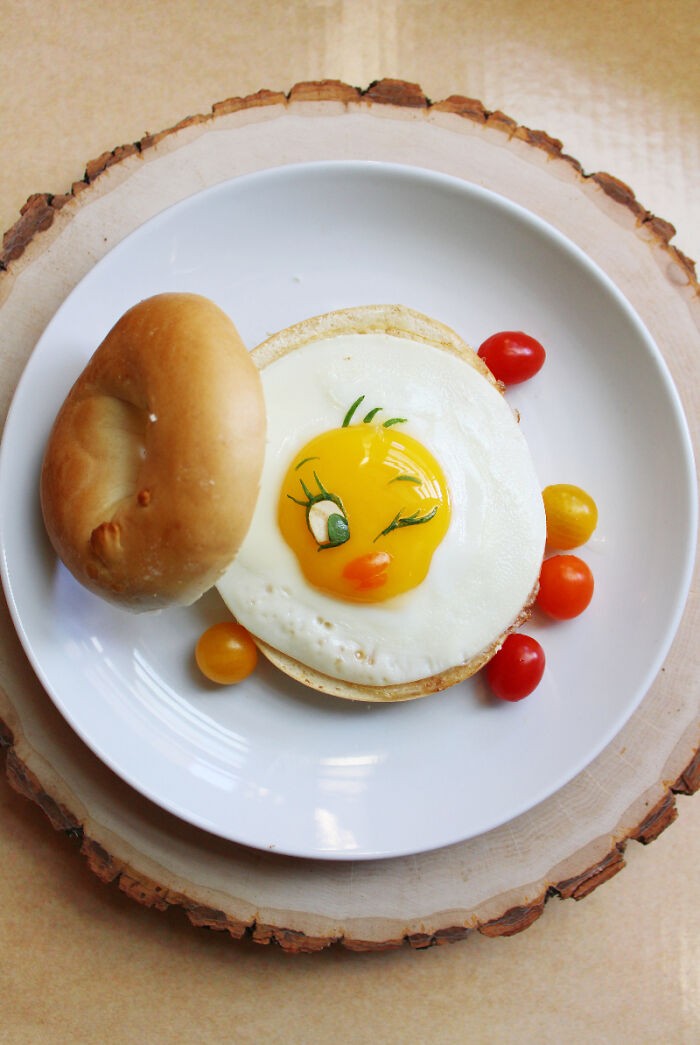
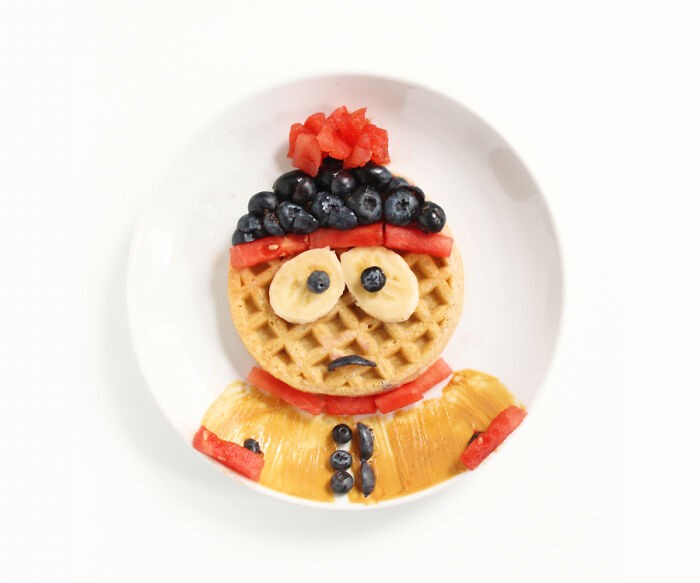


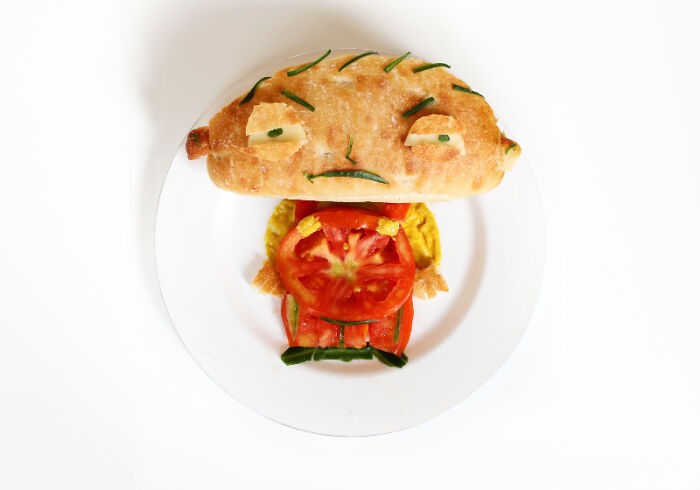
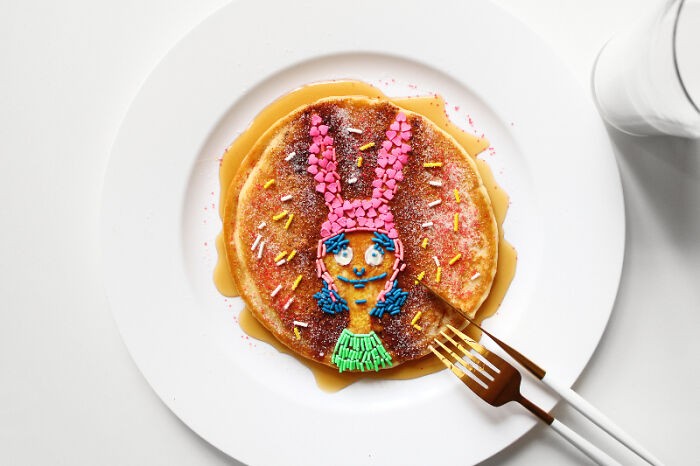
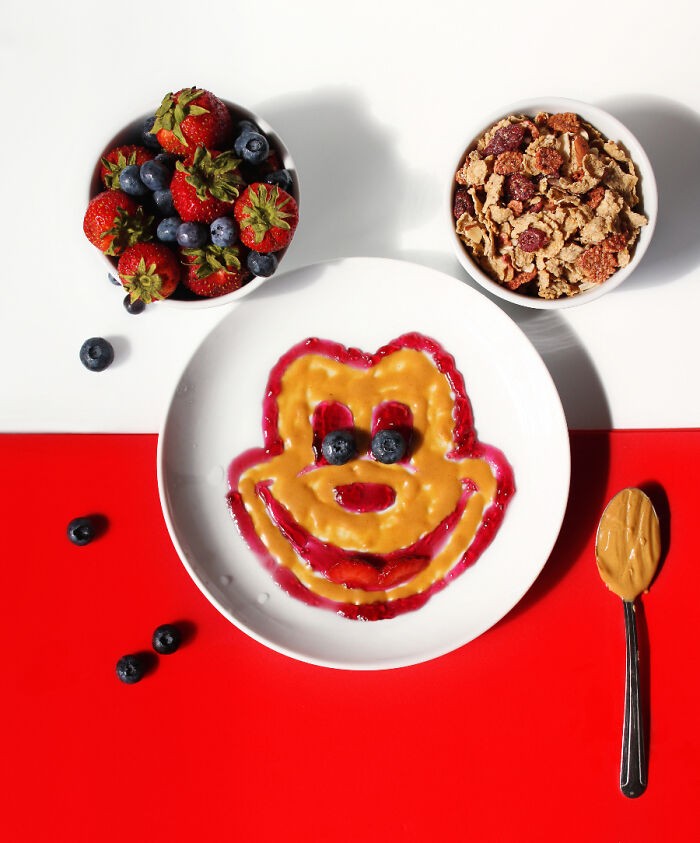

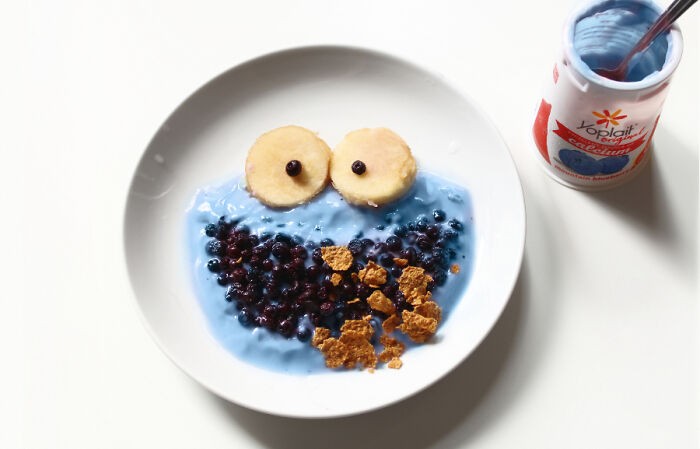
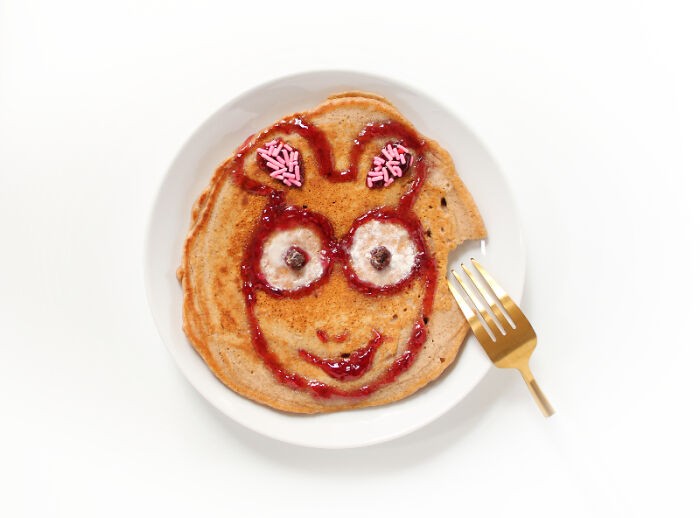
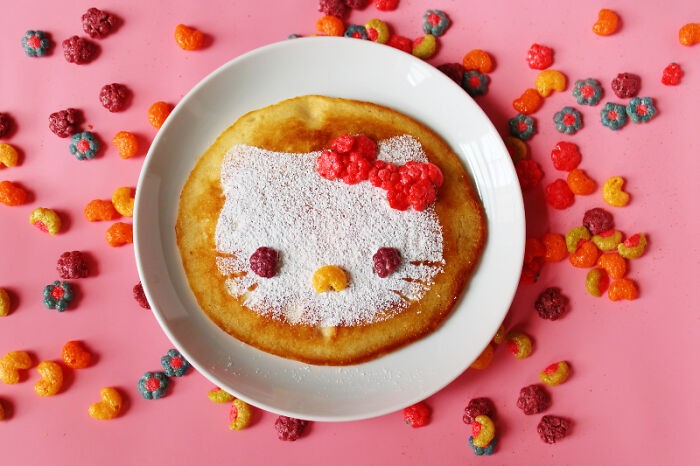
2.2. Texture and Its Role in Food Presentation
Texture is another critical element in food art. The interplay of different textures, such as creamy sauces, crunchy vegetables, and crispy garnishes, can create a more satisfying and engaging eating experience.
Examples of Textural Contrasts
- Smooth avocado cream paired with crunchy tortilla chips
- Soft poached egg on a bed of crispy fried onions
- Chewy noodles with a garnish of toasted sesame seeds
2.3. Composition and Arrangement Techniques
The way food is arranged on a plate or in a display is crucial to its overall appeal. Composition techniques, such as balance, symmetry, and the rule of thirds, can be used to create visually pleasing arrangements that draw the eye and enhance the dining experience.
Composition Guidelines
- Balance: Distribute elements evenly to create a sense of stability.
- Symmetry: Arrange items in a mirrored pattern for a formal look.
- Rule of Thirds: Divide the plate into nine equal parts and place key elements along the lines or intersections.
- Focal Point: Create a central element that draws the viewer’s attention.
- Negative Space: Use empty space to highlight the food and prevent overcrowding.
2.4. Utilizing Garnishes Effectively
Garnishes are used to add visual interest, flavor, and texture to a dish. They can range from simple herbs and spices to elaborate edible flowers and intricate vegetable carvings.
Effective Garnishing Tips
- Choose garnishes that complement the flavor of the dish.
- Use garnishes sparingly to avoid overpowering the main ingredients.
- Consider the color and texture of the garnish in relation to the rest of the dish.
- Ensure that garnishes are fresh and visually appealing.
3. Techniques in Food Art
Mastering food art involves learning various techniques that allow you to manipulate ingredients and create stunning visual effects.
3.1. Vegetable Carving: A Traditional Art Form
Vegetable carving is a traditional art form that involves sculpting intricate designs from fruits and vegetables. Originating in Southeast Asia, this technique requires precision, patience, and specialized tools.
Tools and Techniques
- Thai Carving Knife: A thin, flexible knife used for detailed work.
- Gouge: A curved tool used for creating rounded shapes.
- V-Shaped Cutter: Used for making grooves and lines.
- Basic Cuts: Learn to create petals, leaves, and geometric patterns.
- Advanced Techniques: Explore intricate floral designs and animal sculptures.
Examples of Vegetable Carvings
- Watermelon carved into a blooming flower
- Carrot sculpted into a delicate swan
- Radish transformed into a vibrant rose
3.2. Sauce Painting: Creating Edible Masterpieces
Sauce painting involves using sauces as a medium to create artistic designs on plates. This technique allows you to add flavor and visual interest simultaneously.
Types of Sauces for Painting
- Purees: Smooth vegetable or fruit purees.
- Reductions: Concentrated sauces with intense flavor.
- Emulsions: Creamy sauces like aioli or hollandaise.
- Coulis: Thin fruit or vegetable sauces.
Tools for Sauce Painting
- Squeeze Bottles: For precise lines and dots.
- Spoons: For creating swirls and textures.
- Brushes: For painting delicate details.
- Stencils: For creating consistent shapes.
Techniques for Sauce Painting
- Layering: Applying multiple layers of sauce to create depth.
- Marbling: Swirling different sauces together for a marbled effect.
- Drizzling: Creating thin lines of sauce for added texture.
- Stenciling: Using stencils to create intricate patterns.
3.3. Sugar Work: Sweet Sculptures
Sugar work is the art of creating sculptures and decorations from sugar. This technique requires precision, skill, and specialized equipment.
Types of Sugar Work
- Pulled Sugar: Sugar that is heated and pulled into ribbons, flowers, and other shapes.
- Blown Sugar: Sugar that is heated and blown into hollow shapes using an air pump.
- Cast Sugar: Sugar that is melted and poured into molds to create solid shapes.
- Spun Sugar: Sugar that is spun into delicate threads using a specialized machine.
Equipment for Sugar Work
- Sugar Pot: For heating sugar evenly.
- Heat Lamp: To keep sugar pliable.
- Silicone Mat: To prevent sugar from sticking.
- Air Pump: For blowing sugar.
- Molds: For casting sugar.
Techniques for Sugar Work
- Isomalt Techniques: Using isomalt, a sugar substitute, for greater stability and clarity.
- Coloring Sugar: Adding food coloring to create vibrant sculptures.
- Assembling Sugar Pieces: Joining individual sugar pieces to create larger structures.
3.4. Chocolate Art: From Ganache to Sculptures
Chocolate art encompasses a wide range of techniques, from creating smooth ganache decorations to sculpting intricate chocolate figures.
Types of Chocolate Art
- Chocolate Tempering: Stabilizing chocolate for a smooth, glossy finish.
- Chocolate Molding: Creating shapes by pouring tempered chocolate into molds.
- Chocolate Painting: Using melted chocolate to create artistic designs.
- Chocolate Sculpting: Carving and assembling chocolate to create three-dimensional figures.
Tools for Chocolate Art
- Tempering Machine: For precise temperature control.
- Chocolate Molds: In various shapes and sizes.
- Palette Knives: For spreading and smoothing chocolate.
- Sculpting Tools: For carving and shaping chocolate.
Techniques for Chocolate Art
- Creating Chocolate Decorations: Making curls, shavings, and other decorative elements.
- Assembling Chocolate Sculptures: Joining individual chocolate pieces to create larger structures.
- Using Chocolate Transfer Sheets: Applying designs to chocolate using transfer sheets.
3.5. Bread Art: Sculpting with Dough
Bread art involves shaping and decorating bread dough to create visually appealing loaves and sculptures.
Types of Bread Art
- Decorative Scoring: Making intricate cuts on the surface of the dough before baking.
- Shaping Techniques: Creating different shapes, such as braids, knots, and animals.
- Adding Natural Colors: Using vegetable purees and spices to color the dough.
- Creating Bread Sculptures: Assembling individual dough pieces to create larger structures.
Techniques for Bread Art
- Proofing Techniques: Ensuring the dough rises properly for optimal texture and shape.
- Baking Techniques: Achieving a golden-brown crust and even baking.
- Using Stencils and Stamps: Creating patterns on the surface of the dough.
- Egg Wash Techniques: Applying egg wash for a glossy finish.
4. Inspirations for Food Art
Inspiration for food art can come from various sources, including nature, art, and culture.
4.1. Nature as a Muse
Nature provides endless inspiration for food artists. Flowers, plants, animals, and landscapes can all be recreated using edible materials.
Examples of Nature-Inspired Food Art
- A salad arranged to resemble a garden
- A cake decorated with edible flowers and leaves
- A platter of fruits and vegetables arranged to look like a landscape
- Vegetable carvings of animals
4.2. Drawing Inspiration from Art History
Famous paintings, sculptures, and architectural designs can be reinterpreted using food. Recreating famous art pieces with food can be a fun and creative way to engage with art history.
Examples of Art-Inspired Food Art
- Recreating Van Gogh’s “Starry Night” with mashed potatoes and gravy
- Sculpting Michelangelo’s “David” out of cheese
- Creating a mosaic inspired by Byzantine art using colorful fruits and vegetables
4.3. Cultural Influences on Culinary Art
Different cultures have their own unique culinary traditions and aesthetics, which can serve as inspiration for food art. From Japanese bento boxes to Indian thalis, cultural influences can add depth and authenticity to your creations.
Examples of Culturally Inspired Food Art
- Creating a Japanese bento box with meticulously arranged sushi and vegetables
- Arranging an Indian thali with colorful curries and accompaniments
- Decorating a Middle Eastern mezze platter with intricate patterns
- Making a Vietnamese spring roll with vibrant herbs and vegetables
5. The Benefits of Food Art
Food art offers numerous benefits, both aesthetically and psychologically.
5.1. Enhancing the Dining Experience
Food art elevates the dining experience by engaging the senses and creating a sense of anticipation and delight. A beautifully presented dish can make a meal more memorable and enjoyable.
5.2. Encouraging Healthy Eating Habits
Food art can encourage healthy eating habits, especially among children. By making healthy foods more visually appealing, you can make them more enticing and encourage people to try new things.
Tips for Encouraging Healthy Eating with Food Art
- Create fun shapes and characters using fruits and vegetables.
- Use natural food coloring to make dishes more vibrant.
- Involve children in the creation process to make them more invested in their food.
- Offer a variety of healthy options in visually appealing arrangements.
5.3. Boosting Creativity and Mindfulness
Creating food art can be a therapeutic and meditative activity, allowing you to express your creativity and focus on the present moment. It can be a great way to relax and de-stress while creating something beautiful and delicious.
5.4. Social and Professional Opportunities
Food art can open up social and professional opportunities, such as participating in culinary competitions, collaborating with chefs and restaurants, and sharing your creations on social media.
Ways to Share Your Food Art
- Create an Instagram account to showcase your creations.
- Participate in local food art competitions.
- Collaborate with chefs and restaurants to create unique dishes.
- Offer food art workshops and classes.
- Start a food blog or YouTube channel to share your recipes and techniques.
6. Tools and Ingredients for Food Art
Having the right tools and ingredients is essential for creating successful food art.
6.1. Essential Tools for Aspiring Food Artists
- Knives: A variety of knives, including paring knives, chef’s knives, and carving knives.
- Peelers: For removing skin from fruits and vegetables.
- Mandoline: For creating uniform slices.
- Squeeze Bottles: For precise sauce application.
- Brushes: For painting with sauces and glazes.
- Molds: For shaping chocolate and sugar.
- Cutters: For creating shapes from dough and vegetables.
- Tweezers: For precise placement of small items.
6.2. Selecting the Freshest Ingredients
Fresh ingredients are crucial for creating visually appealing and flavorful food art. Choose ingredients that are in season and of the highest quality.
Tips for Selecting Fresh Ingredients
- Look for vibrant colors and firm textures.
- Avoid ingredients that are bruised, wilted, or discolored.
- Choose organic and locally sourced ingredients whenever possible.
- Taste ingredients before using them to ensure they are flavorful.
6.3. Natural Food Coloring Options
Natural food coloring options can enhance the visual appeal of your food art without the use of artificial dyes.
Natural Food Coloring Sources
| Color | Source | Use |
|---|---|---|
| Red | Beet juice, pomegranate juice | Cakes, frostings, sauces |
| Orange | Carrot juice, pumpkin puree | Cakes, frostings, sauces |
| Yellow | Turmeric, saffron | Rice, sauces, doughs |
| Green | Spinach juice, matcha powder | Cakes, frostings, sauces |
| Blue | Red cabbage juice (with baking soda) | Cakes, frostings, sauces |
| Purple | Blueberry juice, red cabbage juice | Cakes, frostings, sauces |
| Brown | Cocoa powder, coffee | Cakes, frostings, sauces |
| Black | Activated charcoal | Cakes, frostings, sauces |
6.4. Edible Glues and Adhesives
Edible glues and adhesives are used to hold food art pieces together.
Types of Edible Glues
- Royal Icing: A mixture of powdered sugar and egg whites.
- Melted Chocolate: For adhering chocolate pieces.
- Sugar Glue: A mixture of sugar and water, heated until it thickens.
- Corn Syrup: A clear, sticky syrup used for adhering small items.
7. Food Art Around the World
Food art takes on different forms and expressions in various cultures around the world.
7.1. Japanese Bento Art: A Culinary Tradition
Japanese bento art, or “kyaraben,” is the practice of creating elaborate and visually appealing lunch boxes. These lunch boxes often feature characters from popular culture, animals, and other whimsical designs.
Key Elements of Bento Art
- Rice Sculpting: Shaping rice into various forms using molds and cutters.
- Vegetable Carving: Creating intricate designs from vegetables.
- Using Natural Colors: Enhancing the visual appeal of the bento with natural food coloring.
- Arranging Food Artistically: Creating a balanced and visually pleasing composition.
7.2. Thai Fruit Carving: Intricate Designs
Thai fruit carving is a traditional art form that involves sculpting intricate designs from fruits and vegetables. This technique requires precision, skill, and specialized tools.
Popular Fruits for Carving
- Watermelon
- Cantaloupe
- Papaya
- Mango
- Cucumber
Common Designs
- Flowers
- Leaves
- Animals
- Geometric patterns
7.3. Italian Food Presentation: Simplicity and Elegance
Italian food presentation emphasizes simplicity, elegance, and the use of fresh, high-quality ingredients. Dishes are often arranged to showcase the natural colors and textures of the ingredients.
Key Principles of Italian Food Presentation
- Use Fresh, High-Quality Ingredients: Choose ingredients that are in season and of the highest quality.
- Keep It Simple: Avoid overcrowding the plate with too many elements.
- Showcase Natural Colors and Textures: Arrange dishes to highlight the natural beauty of the ingredients.
- Use Garnishes Sparingly: Choose garnishes that complement the flavor and visual appeal of the dish.
7.4. French Haute Cuisine: The Art of Plating
French haute cuisine is renowned for its emphasis on presentation and the art of plating. Dishes are carefully arranged to create a visually stunning and harmonious composition.
Key Techniques in French Plating
- Sauce Painting: Using sauces to create artistic designs on the plate.
- Vertical Plating: Stacking elements to create height and visual interest.
- Using Garnishes Strategically: Adding garnishes to enhance the flavor and visual appeal of the dish.
- Creating a Focal Point: Drawing the viewer’s attention to a central element.
8. Overcoming Challenges in Food Art
Creating food art can be challenging, but with practice and patience, you can overcome these obstacles.
8.1. Time Management and Planning
Food art can be time-consuming, so it’s important to plan ahead and manage your time effectively.
Tips for Time Management
- Plan Your Design: Sketch out your design before you start cooking.
- Prepare Ingredients in Advance: Chop vegetables, make sauces, and prepare any other elements ahead of time.
- Work Efficiently: Streamline your process to minimize wasted time.
- Set Realistic Goals: Don’t try to do too much at once. Start with simple designs and gradually work your way up to more complex creations.
8.2. Ingredient Limitations and Substitutions
Sometimes, you may not have access to all the ingredients you need for a particular food art project. In these cases, it’s important to be flexible and creative with substitutions.
Tips for Ingredient Substitutions
- Understand the Flavor Profile: Before substituting an ingredient, consider its flavor and how it contributes to the overall dish.
- Choose Substitutions with Similar Flavors and Textures: Look for ingredients that have similar characteristics to the ones you’re replacing.
- Experiment: Don’t be afraid to try new things. Sometimes, the best substitutions are the ones you discover through experimentation.
- Document Your Substitutions: Keep track of the substitutions you make so you can replicate them in the future.
8.3. Maintaining Food Safety and Hygiene
When creating food art, it’s important to maintain food safety and hygiene to prevent foodborne illness.
Food Safety Tips
- Wash Your Hands: Wash your hands thoroughly with soap and water before handling food.
- Use Clean Utensils and Equipment: Make sure all utensils and equipment are clean and sanitized.
- Keep Raw and Cooked Foods Separate: Prevent cross-contamination by keeping raw and cooked foods separate.
- Cook Foods to the Proper Temperature: Use a food thermometer to ensure that foods are cooked to a safe internal temperature.
- Refrigerate Foods Promptly: Refrigerate perishable foods within two hours.
- Avoid the Temperature Danger Zone: Do not leave food at room temperature for more than two hours. The temperature danger zone is between 40°F and 140°F (4°C and 60°C), where bacteria grow most rapidly.
8.4. Seeking Constructive Feedback
Getting feedback from others can help you improve your food art skills and identify areas for improvement.
Tips for Seeking Feedback
- Ask Specific Questions: Instead of asking “What do you think?” ask specific questions, such as “What do you think of the color combination?” or “How could I improve the composition?”
- Be Open to Criticism: Don’t take criticism personally. Use it as an opportunity to learn and grow.
- Ask for Suggestions: Ask for suggestions on how you can improve your food art.
- Thank the Person for Their Feedback: Show appreciation for the time and effort they took to provide you with feedback.
9. The Future of Food Art
Food art continues to evolve, with new techniques, technologies, and trends emerging all the time.
9.1. Emerging Trends in Culinary Aesthetics
- 3D-Printed Food: 3D printing technology is being used to create intricate and customized food designs.
- Interactive Food Art: Creating food art that interacts with the diner through augmented reality or other technologies.
- Sustainable Food Art: Using sustainable and locally sourced ingredients to create food art that is both beautiful and environmentally friendly.
9.2. The Role of Technology in Food Design
Technology is playing an increasingly important role in food design, from computer-aided design (CAD) software to advanced cooking equipment.
Examples of Technology in Food Design
- Using CAD software to create precise food designs.
- Using 3D printers to create customized food items.
- Using sous vide equipment to cook food to perfection.
- Using advanced imaging techniques to analyze the composition and texture of food.
9.3. Food Art as a Form of Social Commentary
Food art can be used as a form of social commentary, addressing issues such as food waste, sustainability, and cultural identity.
Examples of Social Commentary in Food Art
- Creating food art from discarded ingredients to raise awareness about food waste.
- Using locally sourced ingredients to promote sustainable agriculture.
- Recreating traditional dishes to celebrate cultural identity.
- Addressing social and political issues through food art.
9.4. The Intersection of Food, Art, and Science
Food art is increasingly seen as an intersection of food, art, and science, with chefs, artists, and scientists collaborating to create innovative and groundbreaking culinary experiences.
Examples of Collaboration
- Chefs collaborating with artists to create visually stunning dishes.
- Scientists working with chefs to understand the chemical and physical properties of food.
- Artists using scientific techniques to create innovative food art.
- Food Art at FOODS.EDU.VN
At FOODS.EDU.VN, we are dedicated to bringing you the latest trends, techniques, and inspirations in food art. Our goal is to provide you with the knowledge and resources you need to explore your culinary creativity and transform your meals into masterpieces.
10. Food Art at FOODS.EDU.VN: Resources and Inspiration
FOODS.EDU.VN is your ultimate resource for exploring the captivating world of food art. We offer a wealth of information, inspiration, and practical guidance to help you transform ordinary meals into extraordinary visual experiences. Whether you’re a seasoned culinary professional or a curious home cook, our platform provides the tools and insights you need to master the art of food presentation.
10.1. Step-by-Step Tutorials
Our website features a vast collection of step-by-step tutorials that cover a wide range of food art techniques. From basic plating methods to advanced sugar sculpting, our tutorials offer clear, concise instructions and helpful tips to guide you through each process.
Examples of Tutorials
- Vegetable Carving for Beginners: Learn the fundamentals of creating intricate designs from fresh produce.
- Sauce Painting Techniques: Discover how to use sauces to create stunning edible masterpieces.
- Chocolate Art: Master the art of tempering, molding, and sculpting chocolate for elegant desserts.
- Bread Art: Unleash your creativity by shaping and decorating bread dough into visually appealing loaves and sculptures.
10.2. Expert Tips and Tricks
Our team of culinary experts and food artists share their insights and secrets to help you elevate your food presentation skills. From selecting the freshest ingredients to mastering complex techniques, our expert advice will empower you to create visually stunning and delicious dishes.
Expert Tips Examples
- Color Theory for Culinary Creations: Learn how to use color to enhance the visual appeal of your dishes.
- Textural Contrasts: Discover how to create satisfying eating experiences through the interplay of different textures.
- Composition and Arrangement: Master the art of arranging food on a plate to create balanced and visually pleasing compositions.
- Garnishing Techniques: Learn how to use garnishes effectively to add flavor, texture, and visual interest to your dishes.
10.3. Inspiring Galleries of Food Art
Explore our inspiring galleries of food art to discover a world of creative possibilities. Our galleries showcase the work of talented food artists from around the globe, providing you with endless ideas and inspiration for your own culinary creations.
Gallery Themes
- Nature-Inspired Food Art: Discover how to recreate flowers, plants, animals, and landscapes using edible materials.
- Art History Reimagined: See famous paintings, sculptures, and architectural designs reinterpreted using food.
- Cultural Influences: Explore the unique culinary traditions and aesthetics of different cultures.
- Modern Food Art: Stay up-to-date with the latest trends in food presentation, including 3D-printed food, interactive art, and sustainable creations.
10.4. Community Forums for Sharing and Learning
Connect with fellow food enthusiasts and artists in our vibrant community forums. Share your creations, ask questions, and exchange tips and ideas with like-minded individuals. Our forums provide a supportive environment for learning and growth, helping you to expand your culinary horizons and unleash your creative potential.
Forum Topics
- Technique Discussions: Engage in in-depth discussions about food art techniques, tools, and materials.
- Creative Challenges: Participate in fun and engaging challenges to test your skills and inspire new ideas.
- Feedback and Critiques: Share your creations and receive constructive feedback from fellow community members.
- Recipe Sharing: Exchange recipes and ideas for creating visually stunning and delicious dishes.
- Event Announcements: Stay informed about local and international food art events, workshops, and competitions.
10.5. Latest Trends and Innovations
Stay ahead of the curve with our coverage of the latest trends and innovations in food art. We bring you the most exciting developments in culinary aesthetics, from emerging techniques and technologies to groundbreaking collaborations and social commentary.
Trend Topics
- 3D-Printed Food: Discover the potential of 3D printing to revolutionize food design and customization.
- Interactive Food Art: Explore the use of augmented reality and other technologies to create engaging dining experiences.
- Sustainable Food Art: Learn how to create visually stunning and environmentally friendly dishes using sustainable ingredients.
- Social Commentary: See how food art is being used to address important social and political issues.
FAQ: Your Questions About Food Art Answered
Navigating the world of food art can bring up many questions. Here are some frequently asked questions to help you get started and deepen your understanding.
1. What exactly is food art, and how does it differ from regular cooking?
Food art is the creative process of transforming edible items into visually appealing artworks, going beyond basic cooking by focusing on aesthetic presentation to evoke emotion or tell a story.
2. What are the basic tools needed to start creating food art?
Essential tools include a variety of knives, peelers, a mandoline, squeeze bottles, brushes, molds, cutters, and tweezers for precise arrangement.
3. How can I use color effectively in my food art creations?
Use color theory to your advantage by combining complementary, analogous, or monochromatic colors to make your dishes more visually appealing and appetizing.
4. What are some natural food coloring options I can use?
Natural food coloring can be derived from beet juice (red), carrot juice (orange), turmeric (yellow), spinach juice (green), and red cabbage juice (blue/purple).
5. What are some tips for managing time when creating complex food art?
Plan your design in advance, prepare ingredients ahead of time, work efficiently, and set realistic goals to manage your time effectively.
6. How can I maintain food safety while creating food art?
Ensure food safety by washing your hands, using clean utensils, keeping raw and cooked foods separate, cooking foods to the proper temperature, and refrigerating foods promptly.
7. Where can I find inspiration for my food art projects?
Inspiration can be found in nature, art history, cultural influences, and by exploring the works of other food artists.
8. What are some emerging trends in food art?
Emerging trends include 3D-printed food, interactive food art, and sustainable food art, which focuses on using locally sourced ingredients.
9. How can technology enhance food art?
Technology enhances food art through CAD software, 3D printers for customized designs, sous vide equipment for precise cooking, and advanced imaging techniques for analyzing food composition.
10. How does FOODS.EDU.VN support aspiring food artists?
FOODS.EDU.VN provides step-by-step tutorials, expert tips, inspiring galleries, community forums, and updates on the latest trends and innovations in food art.
Conclusion: Unleash Your Inner Food Artist
Food art is more than just arranging food; it’s about expressing creativity, enhancing the dining experience, and connecting with others through the universal language of food. Whether you’re a seasoned chef or a home cook, we encourage you to explore the world of food art and discover the joy of transforming ordinary meals into extraordinary works of art. At FOODS.EDU.VN, we’re here to guide you every step of the way with expert advice, inspiring ideas, and a supportive community.
Ready to embark on your culinary adventure? Visit FOODS.EDU.VN today and discover a treasure trove of resources, inspiration, and expert guidance. Our platform is designed to cater to all skill levels, providing you with the knowledge and tools you need to create stunning food art that will impress your friends, family, and followers.
Unlock Your Culinary Potential with FOODS.EDU.VN
- Access detailed tutorials and step-by-step guides.
- Learn from seasoned culinary experts and food artists.
- Explore inspiring galleries of food art from around the world.
- Connect with a vibrant community of food enthusiasts.
- Stay up-to-date with the latest trends and innovations.
Contact Us
- Address: 1946 Campus Dr, Hyde Park, NY 12538, United States
- WhatsApp: +1 845-452-9600
- Website: foods.edu.vn
Start your journey today and transform every meal into a masterpiece.
![Cartoon-inspired food art using fresh ingredients on a blue plate, featuring a house and figure made of vegetables and cheese, representing creative